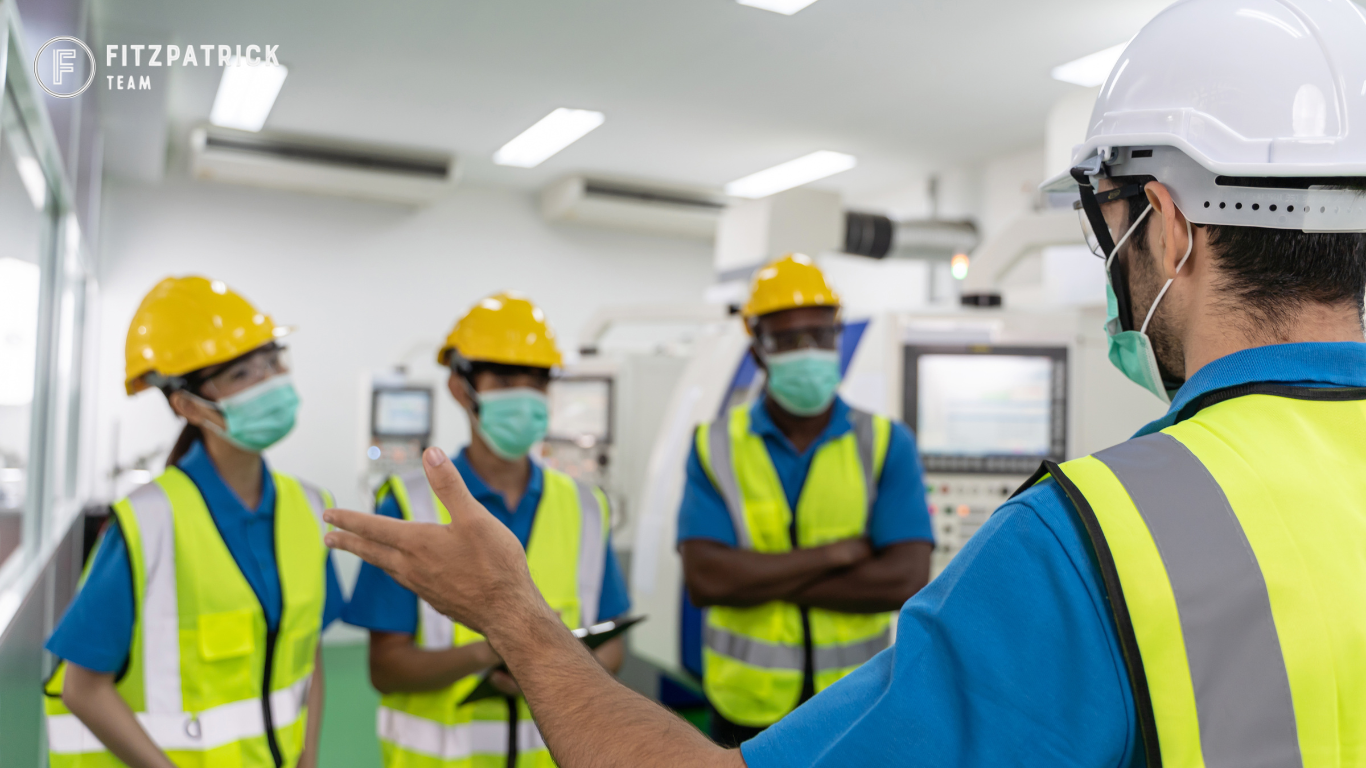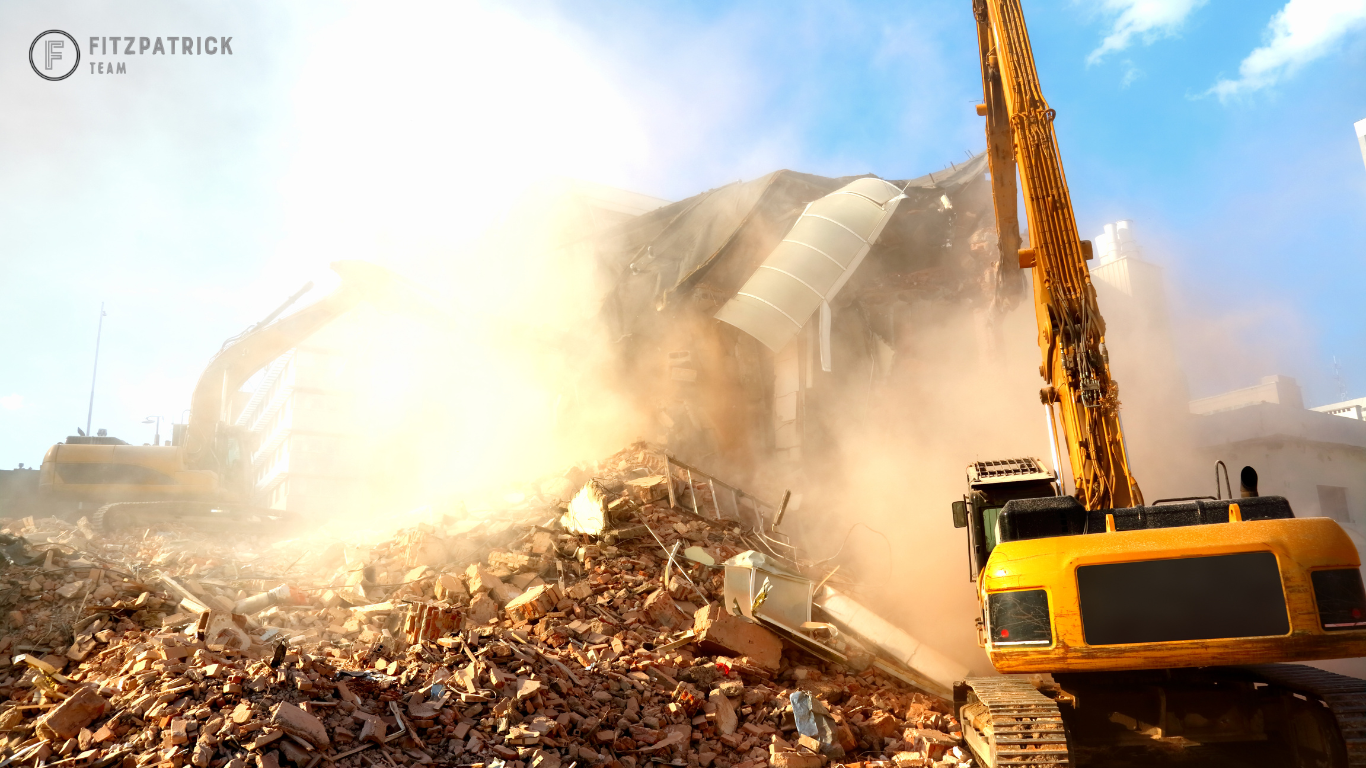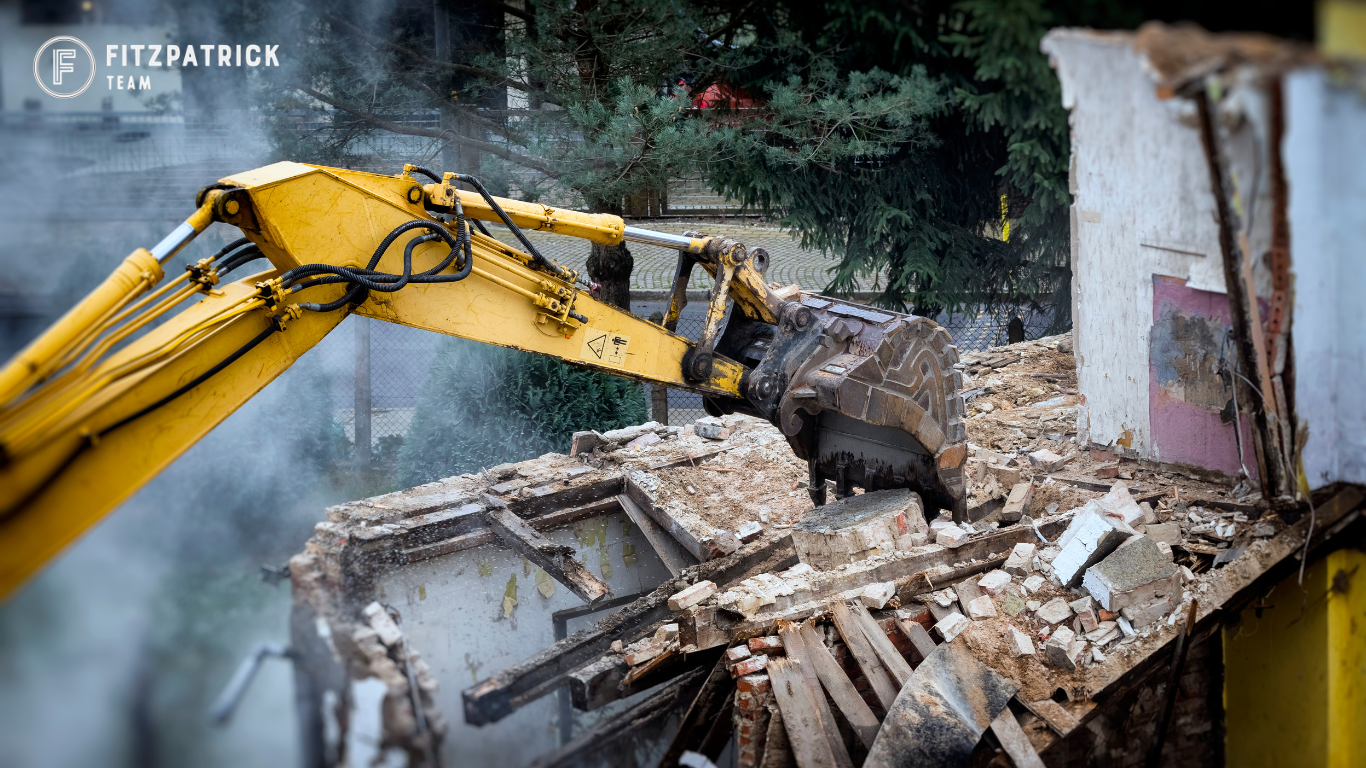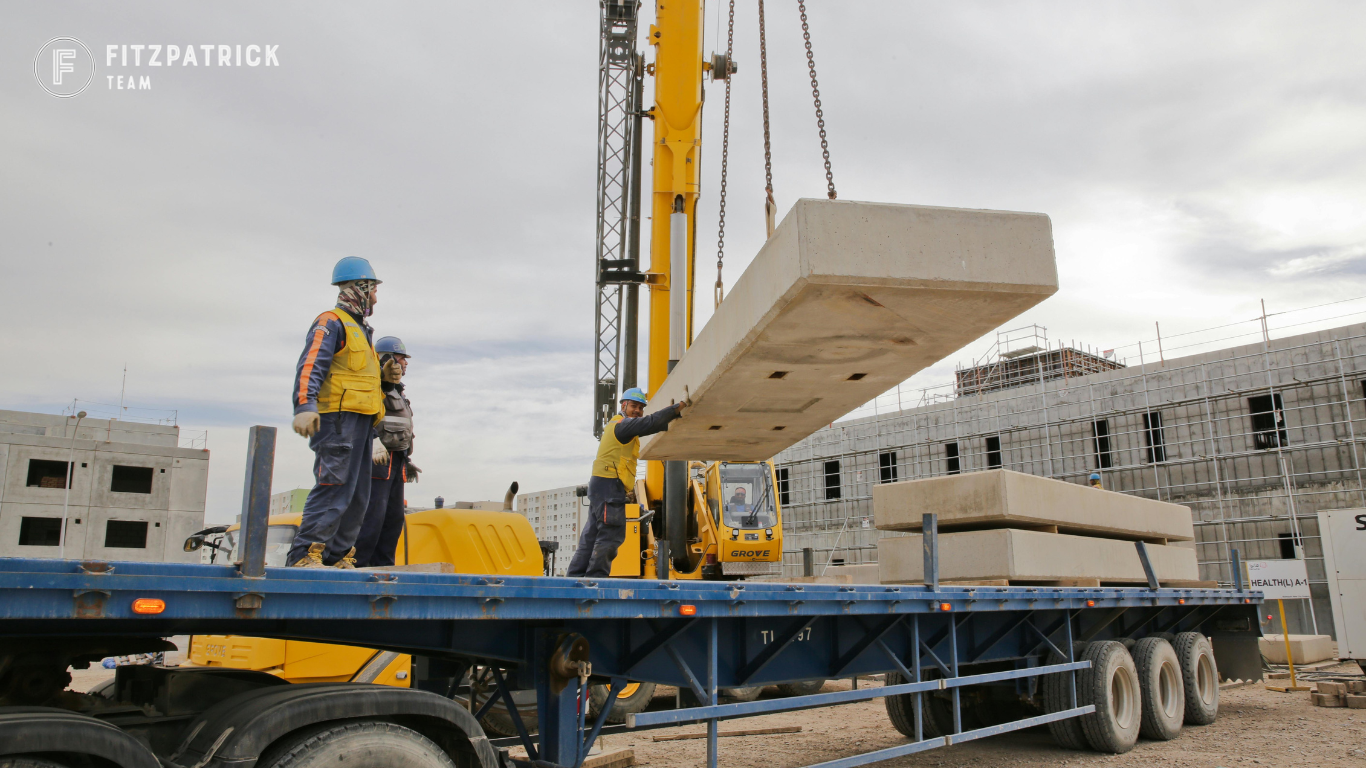Managing Noise and Dust During Construction in Brighton
Construction is a necessary part of growth and development, but it can also bring challenges, particularly when it comes to noise and dust. In a vibrant community like Brighton, managing these environmental impacts is crucial for preserving the quality of life for residents and ensuring harmonious progress. This article explores the best practices for minimising noise and dust during construction projects in Brighton, highlighting the importance of proactive planning and responsible execution. At Fitzpatrick Team, a local construction and demolition services company in Brighton, we understand these challenges and are committed to implementing effective strategies to mitigate these impacts.

Understanding the Challenges: Noise and Dust in Construction
Construction activities, by their very nature, generate noise and dust. From demolition and excavation to the operation of heavy machinery and the movement of materials, various processes contribute to these environmental concerns. Understanding the specific sources and characteristics of noise and dust associated with construction is the first step towards effective management.
- Noise Sources: Construction noise can originate from a variety of sources, including:
- Heavy machinery such as excavators, bulldozers, and cranes.
- Power tools like saws, drills, and jackhammers.
- Trucks and other vehicles transport materials.
- Impact activities such as hammering and pile driving.
- Dust Sources: Dust is generated by activities such as:
- Demolition of existing structures.
- Excavation and earthmoving.
- Handling and storage of materials like concrete, brick, and soil.
- Movement of vehicles on unpaved surfaces.
The Importance of Proactive Planning
Effective noise and dust management begins long before construction commences. Proactive planning is essential for identifying potential issues, developing appropriate mitigation strategies, and ensuring compliance with local regulations. This planning phase should involve:
- Noise and Dust Assessments: Conducting thorough assessments to identify potential noise and dust hotspots and predict the levels of impact on surrounding areas. These assessments should consider factors such as the proximity of residential areas, schools, and other sensitive receptors.
- Developing a Management Plan: Creating a comprehensive noise and dust management plan that outlines specific mitigation measures, monitoring procedures, and communication strategies. This plan should be tailored to the specific project and its context.
- Community Consultation: Engaging with the local community to inform them about the project, address their concerns, and establish a channel for ongoing communication. This proactive approach can help build trust and minimise potential conflicts.
- Regulatory Compliance: Ensuring that the project complies with all relevant environmental regulations and guidelines related to noise and dust control. This includes obtaining necessary permits and approvals.
Implementing Effective Mitigation Strategies
Once the planning phase is complete, the focus shifts to implementing the chosen mitigation strategies during the construction process. These strategies can include a combination of engineering controls, work practices, and community engagement initiatives.
- Engineering Controls: These involve physical measures to reduce noise and dust at the source. Examples include:
- Using quieter equipment and machinery.
- Installing noise barriers and inclosures.
- Employing dust suppression techniques such as water spraying and misting.
- Enclosing or covering stockpiles of materials.
- Work Practices: Adopting best practices for construction activities can significantly minimise noise and dust. These practices include:
- Scheduling noisy activities during less sensitive times of the day.
- Minimising the drop height of materials.
- Controlling vehicle speeds on site.
- Regularly cleaning paved surfaces.
- Community Engagement: Maintaining open communication with the community throughout the construction process is essential. This can involve:
- Providing regular updates on project progress.
- Addressing community concerns promptly and effectively.
- Establishing a complaints procedure.
Monitoring and Evaluation
Ongoing monitoring and evaluation are crucial for ensuring the effectiveness of noise and dust management measures. This involves:
- Regular Monitoring: Conducting regular monitoring of noise and dust levels to track compliance with established limits and identify any potential issues.
- Data Analysis: Analysing monitoring data to assess the effectiveness of mitigation strategies and make adjustments as needed.
- Reporting: Preparing regular reports on monitoring results and sharing them with relevant stakeholders, including the community.
Your Partner in Responsible Construction
At Fitzpatrick Team, we are committed to responsible construction practices in Brighton. We understand the importance of minimising noise and dust impacts and work closely with our clients and the community to achieve this goal. Our experience in the local area allows us to navigate the specific challenges of construction in Brighton and implement effective solutions. We believe that construction can be carried out in a way that respects the environment and the community, and we strive to uphold this principle in all our projects.
Specific Measures Employed by Fitzpatrick Team
We utilise a range of strategies to manage noise and dust on our projects, including:
- Modern Equipment: Employing well-maintained, modern equipment that meets stringent noise emission standards.
- Dust Suppression: Utilising water trucks and dust suppression sprays to control dust generation during excavation and demolition.
- Site Management: Implementing strict site management practices to minimise vehicle movements and material handling.
- Community Liaison: Maintaining open communication with local residents and businesses to address any concerns.
Working Towards a Quieter and Cleaner Brighton
By embracing proactive planning, implementing effective mitigation strategies, and engaging with the community, we can minimise the impact of construction noise and dust in Brighton. It requires a collaborative effort from all stakeholders, including construction companies, developers, and residents.
At Fitzpatrick Team, we are proud to play our part in creating a quieter and cleaner Brighton for everyone to enjoy. We understand that managing noise and dust is not just about compliance; it's about being a responsible member of the community. We are committed to ongoing improvement in our practices and welcome feedback from the community on how we can further enhance our efforts.











